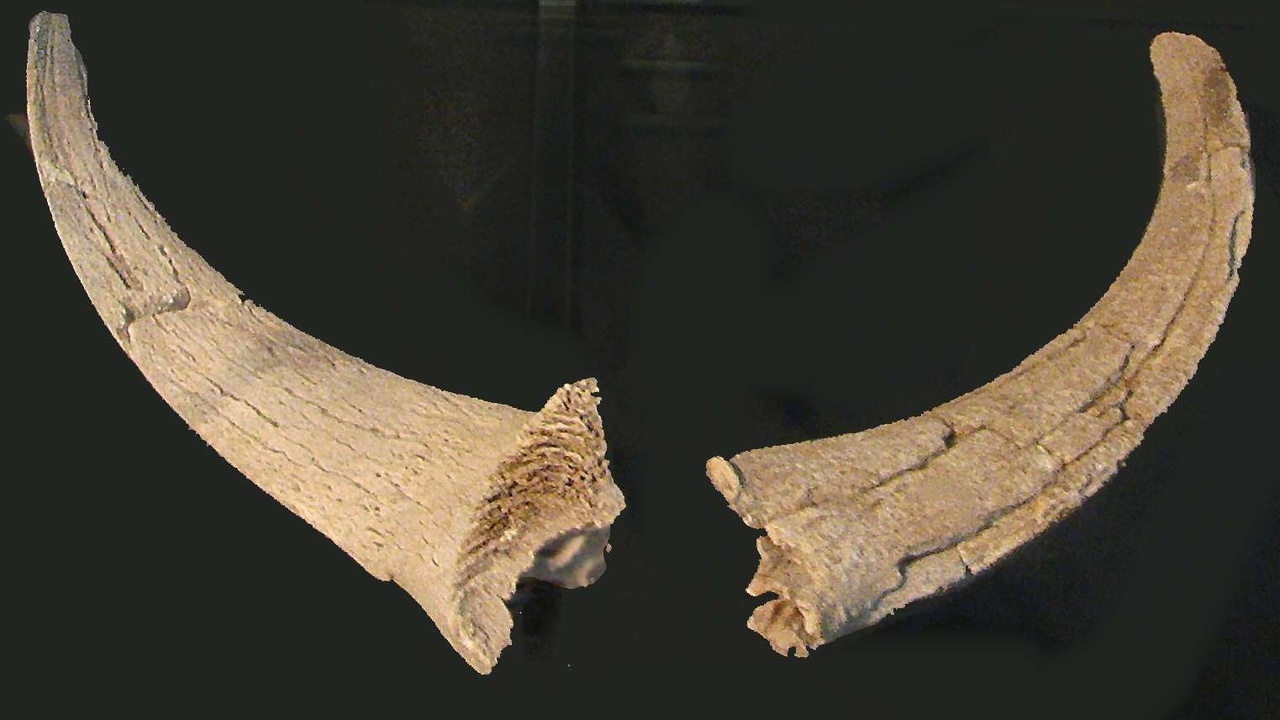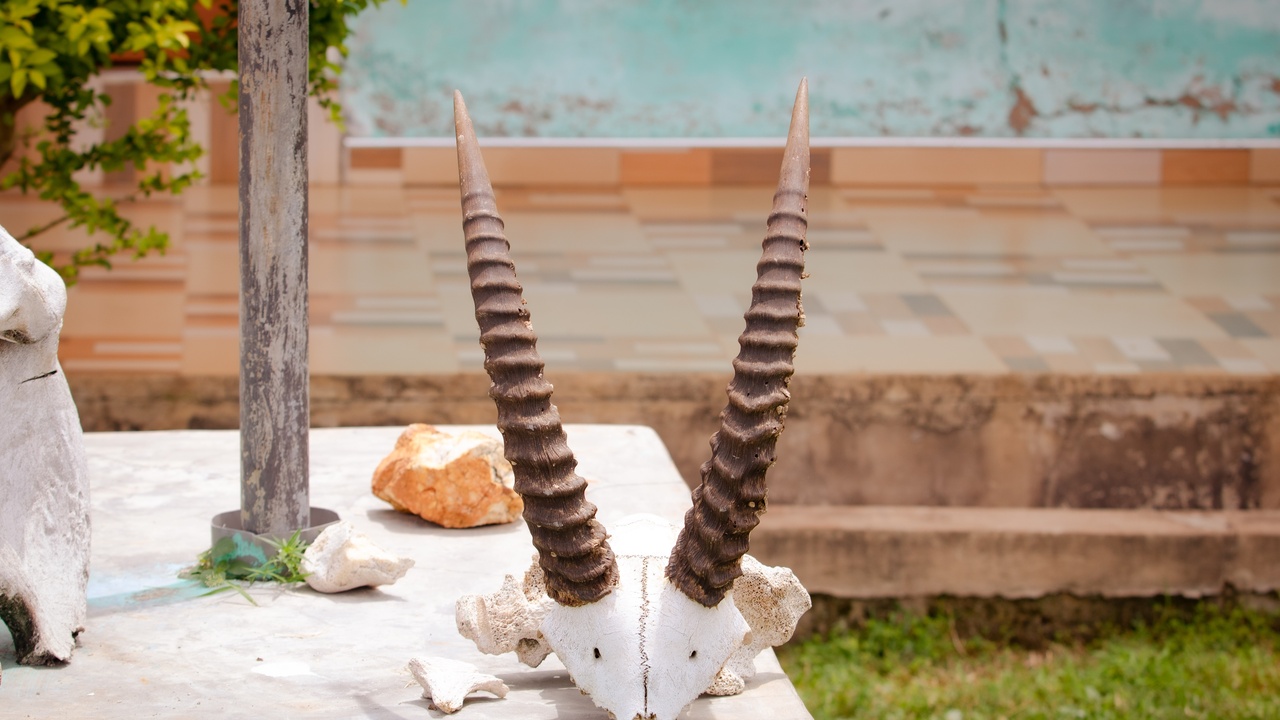Early naturalists in the 18th century (including Carl Linnaeus) puzzled over the purpose and makeup of horns and antlers, collecting specimens that later revealed dramatic biological differences.
Horns and antlers look similar at a glance, but those collected specimens helped show two very different biological stories. Understanding the differences between horns and antlers matters for ecology, hunting and wildlife management, museum preservation, and cultural uses like instruments and trophies. Antlers can grow extremely fast—up to about 1 inch (2.5 cm) per day in peak summer growth—which signals the big energetic investment behind them.
Anatomy and Composition

1. Material: Keratin sheath and bony core versus true bone
Horns in most bovids consist of a living bony core that is covered by a keratin sheath, while antlers are grown as true bone that will be shed and regrown each year.
Most horn cores are continuous with the skull; they’re alive at the base and covered with dead keratin outwardly. Rhinoceros horns are a notable exception: they’re built from compressed keratin fibers without a bony core. Antlers, by contrast, are cancellous and cortical bone with internal trabeculae—an elk antler cross-section shows the spongy interior that supports heavy tines.
That structural distinction matters practically: keratin sheaths are treated differently in taxidermy and museum conservation, rhino-horn identification relies on keratin tests, and antler bone can be radiographed or sampled for age and health signals. Examples: cattle, goats and bison for keratin-sheathed horns; elk and white-tailed deer for solid antlers; rhinoceros as the keratin-only case.
2. Branching and shape: Usually unbranched horns vs often-branched antlers
Branching is a fast visual cue: many antlers branch into multiple tines, while true horns are typically unbranched and take the form of curves, spirals, or straight points.
Moose, elk and red deer develop broad, multi-tined antlers (moose show palmation), which are ideal for locking and wrestling. By contrast, most bovids—cattle, goats, and many antelope—carry single-pointed or gently curved horns. The pronghorn is a special case: it bears a keratinous sheath over a bony core that forks and is shed annually, making it visually intermediate.
For field ID and hunting, that branching pattern is useful: a palmate moose rack is unmistakable, while long, unbranched Texas Longhorns are identifiable at long range.
3. Surface and velvet: Permanent sheath versus vascular velvet stage
Antlers develop covered in velvet, a vascularized skin that supplies blood and nutrients during rapid bone growth; horns keep a permanent keratin sheath once formed.
Velvet is richly supplied with blood vessels and nerves while antlers calcify beneath it; during peak growth antlers can add about 1 inch (2.5 cm) a day. Once calcified, the velvet is rubbed off and the hard bone remains. Horn sheaths, by contrast, are made of keratin and remain in place over the bony core throughout life.
Velvet is prized in some traditional medicines and is harvested on deer farms under regulation, while damage to velvet in the wild can hinder a male’s ability to complete antler growth and affect mating displays. Examples: summer velvet-covered elk antlers and smooth keratin horns on adult cattle.
Growth, Life Cycle, and Physiology

4. Seasonal growth and shedding: Antlers are regrown and dropped annually
Antlers undergo a clear annual cycle: they’re grown in spring and summer, used in the breeding season, then shed in late winter to early spring in temperate zones (commonly January–March).
Growth is fast—up to about 1 inch (2.5 cm) per day at peak—so males must divert substantial protein and minerals into antlers. Shed antlers are collected by hobbyists and researchers; they provide age and health clues and support local economies through crafts and tourism. Large species like moose can develop massive racks—mature bulls sometimes carry antlers approaching 40 lb (≈18 kg).
Knowing peak growth and shedding windows helps wildlife managers set laws for shed collection, and it guides researchers sampling for nutrition or disease markers in bone.
5. Continuous growth versus lifelong enlargement: Horns keep growing
Horns generally grow continuously throughout an animal’s life, adding material each year rather than being cast off seasonally.
Because horn growth is cumulative, horn length and mass often correlate with age and social status. Bighorn sheep show horn annuli that managers use to estimate age, while some domestic Texas Longhorns reach tip-to-tip spreads greater than 8 feet (≈2.4 m) in record individuals. For livestock and captive animals, that ongoing growth motivates dehorning and other husbandry practices to reduce injury and handling risks.
Continuous growth also means horn damage carries long-term consequences—chips or breaks don’t reset each year as antler damage can after a shed and regrowth.
6. Hormones, nutrition, and energetic cost
Antler cycles are tightly linked to seasonal hormones—testosterone rises and falls control timing of velvet shedding and antler hardening—while horns are less tied to an annual hormonal surge and instead require steady resources over time.
Rapid antler formation demands high protein, calcium and phosphorus; deer farmers commonly supplement feed during velvet growth to support healthy racks. After the rut, males often show weight loss as energy and minerals are diverted to antler and reproductive effort. Horn growth draws resources steadily, but without the same dramatic seasonal spikes.
These physiological differences affect management: nutritional support can boost antler production in farmed deer, while in wild populations managers monitor forage and body condition to predict breeding success and survival.
Function, Behavior, and Human Uses

7. Defense and fighting mechanics: Ramming, hooking, pushing
Both horns and antlers serve in defense and combat, but the mechanics differ: horns are adapted for ramming, hooking and piercing, while antlers are built for locking, pushing and wrestling during prolonged contests.
Bighorn sheep famously ram heads in high-speed collisions where thick skulls and curved horns absorb impact; many goats and cattle use horns to hook or toss opponents. Red deer stags lock antlers and push in wrestling bouts that can last minutes, testing stamina and leverage more than pure impact. These differing fight styles lead to distinct injury patterns and influence which traits selection favors—mass and curve for ramming species, tine arrangement and leverage for wrestlers.
Managers and hunters use knowledge of combat style to assess risk, set safety guidelines, and interpret scars or horn damage seen on animals.
8. Sex differences and social roles: Which sex grows them and why
Antlers are primarily a male trait among cervids and function largely in sexual display and male–male competition, though female reindeer (caribou) are a clear exception and also grow antlers.
Horns are frequently present in both sexes among bovids, though males often have larger, more robust horns. For example, many antelope species show horns in both sexes with size dimorphism, and female mountain goats and African buffalo also carry horns. That sex distribution affects behavior: horned females may use horns for maternal defense and social dominance, while antlered males use antlers primarily in the rut.
For field identification and captive breeding programs, knowing which sex typically bears headgear improves age/sex estimates and enclosure design.
9. Human cultural and economic uses: Tools, trophies, medicine, and craft
Humans have used horns and antlers in different ways across history: horns became instruments, powder containers and carved tools, while antlers have been prized as trophies, dog chews and raw material for carving.
The shofar, a ceremonial ram’s horn, and historical powder horns are examples of horn-based instruments and containers. Antlers appear on trophy walls, serve as handles for knives and are sold as natural dog chews. Velvet antler is harvested on deer farms and used in some East Asian traditional medicine markets, which in turn shapes demand for farmed and wild antler products.
That commercial and cultural demand influences regulations, farming practices and, unfortunately, illegal trade in horn and antler-derived goods.
10. Conservation, management, and legal implications
The biological differences drive different conservation and management priorities: rhino horn trade has led to intense anti-poaching efforts, whereas shed-antler collection is typically non-lethal and often regulated seasonally or locally.
CITES listings and national laws tightly restrict trade in rhino horn and some horned game species, while many jurisdictions allow regulated shed-antler gathering or institute permits to prevent disturbance. Wildlife managers use knowledge of antler cycles and horn growth to set hunting seasons, design monitoring programs, and time interventions like supplemental feeding or translocations.
Examples: international bans and enforcement efforts focused on rhino horn, and local rules or festivals that control shed-antler collection to protect breeding areas in winter.
Summary
- Horns are usually keratin-sheathed over a bony core (except rhinos) and grow continuously; antlers are solid bone grown seasonally and shed each year.
- Branching, surface texture and the velvet stage help tell them apart—antlers often branch and develop under vascular velvet, while horns are typically unbranched with a permanent sheath.
- Sex and function differ: antlers are mainly male mating displays (with exceptions like female reindeer), whereas horns often appear in both sexes and serve defense and social roles.
- Human uses and threats diverge—velvet antler harvest and shed-antler crafts contrast sharply with high-stakes anti-poaching and trade restrictions around rhino horn.
- Knowing the key differences between horns and antlers matters for wildlife management, conservation policy, and responsible cultural use.


